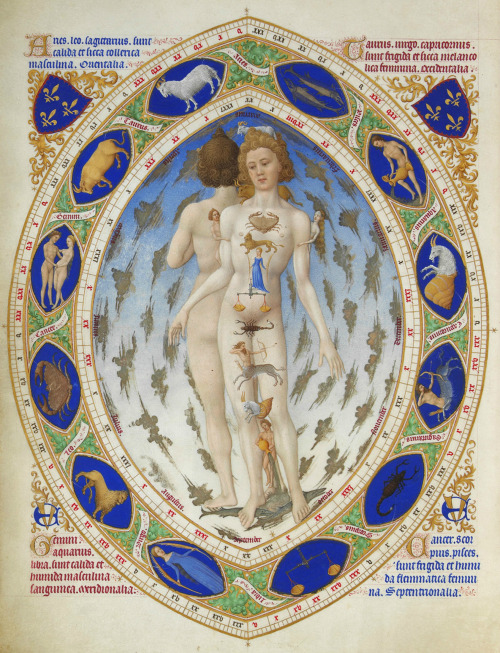#limbourg brothers
MWW Artwork of the Day (4/13/16)
Limbourg Brothers (Dutch, fl. 1385–1416)
Les Très Riches Heures du Duc de Berry: Avril (c. 1412-16)
Tempera on vellum, 29.4 x 21 cm.
Musée Condé, Chantilly
April: The arrival of spring, hope and new life – the grass is green and a newly betrothed couple are exchanging rings in the foreground, accompanied by friends and family. The chateau is another one of the Duc’s, that of Dourdan.
The “Très Riches Heures du Duc de Berry” is a sumptuously decorated Book of Hours (containing prayers to be said by the lay faithful at each of the canonical hours of the day) commissioned by John, Duke of Berry, around 1410. It is probably the most important illuminated manuscript of the 15th century, “le roi des manuscrits enluminés” (“the king of illuminated manuscripts”). The Très Riches Heures consists of 416 pages, including 131 with large miniatures and many more with border decorations or historiated initials, that are among the high points of International Gothic painting in spite of their small size. There are 300 decorated capital letters. The book was worked on, over a period of nearly a century, in three main campaigns, led by the Limbourg brothers, Barthélemy van Eyck, and Jean Colombe. The book is now Ms. 65 in the Musée Condé, Chantilly, France.
The most celebrated part of the manuscript is its Calendar. A generalized calendar (not specific to any year) of church feasts and saints’ days, often illuminated, is a usual part of a book of hours, but the illustrations of the months in the Très Riches Heures are exceptional and innovative in their scope, and the best known element of the decoration of the manuscript. Most of them show one of the duke’s castles in the background, and are filled with details of the delights and labors of the months, from the Duke’s court to his peasants, a counterpart to the prayers of the hours. Each illustration is surmounted with its appropriate hemisphere showing a solar chariot, the signs and degrees of the zodiac, and numbering the days of the month and the martyrological letters for the ecclesiastic lunar calendar.
For the rest of this celebrated Calendar, see this MWW Special Collection:
* MWW Ancient/Medieval Art
Post link
The Limbourg brothers,The Zodiac, in Les Très Riches Heures du Duc de Berry
1412 -1416, tempera on vellum, 30 x 21.5 cm, F.14 V, Musée Condé, Chantilly, France
Post link


